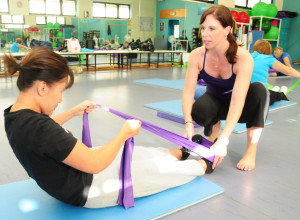If you are struggling with lower back pain that radiates down your leg, you might have hit the internet searching for answers, only to find the terms “sciatica” and “herniated disc” discussed frequently. This is because both conditions can cause debilitating back...
You open your eyes, stretch, and sit up, ready to start the day. But the moment your feet hit the floor, a sharp or aching pain shoots through your heels, arches, or the balls of your feet. Morning should feel refreshing, yet instead, you find yourself hobbling to the...
Are you a fitness enthusiast or a dedicated athlete who has suddenly been sidelined by a nagging, persistent pain in your calf and ankle? That sharp or aching sensation that flares up during or after activity could be the result of Achilles tendonitis. The Achilles...
Treating Muscle Sprains and Strains

As an athlete, you constantly put your body through physical activity that causes wear and tear. Some of the most common injuries you may suffer include sprains and strains. While these injuries aren’t usually severe, they can be painful. Fortunately, there are many ways to deal with these types of injuries that will have you feeling better and get you back in the game as soon as possible.
A sprain is the stretching or tearing of a ligament, which is the fibrous tissue that connects bones to a joint. It’s possible to sprain more than one ligament at a time.
A strain, on the other hand, is an injury to a muscle or a tendon, which is a fibrous cord of tissue that connects muscle to bone.
Learn more about muscle sprains and strains and the proven treatment methods that allow you to heal from your injury.
Treatment
The RICE method should be used when treating a sprain or a strain. This treatment method helps to minimize swelling and decrease pain. To perform the RICE method, you should do the following:
• Rest: Avoid physical activity and exercise for a few days, and avoid putting weight on the injury. This helps the ligament, muscle, or tendon heal. Putting stress on the injured area could cause the injury to worsen.
• Ice: Apply an ice pack to the injured area for 20 minutes at a time for about four to eight hours a day. Avoid keeping the ice on the area for more than 20 minutes, and keep a towel between the skin and the ice pack.
• Compression: Wrap the injury with an ACE bandage so it fits snugly but not too tightly. If you’re not sure how to do this, ask your physician how to wrap your injury.
• Elevation: Prop your ankle, knee, elbow, or wrist so it’s above your heart. This will help to decrease swelling.
Casting
If the RICE method doesn’t improve your condition after a few days, your doctor may recommend a cast. It will stabilize your injury and give the ligaments, tendons, and muscles the opportunity to heal without being disturbed.
Surgery
In severe cases, a sprain or strain could cause the ligament or tendon to tear, which means it won’t be able to heal on its own and surgery is required. During the surgery, your doctor will reattach the ligament or tendon to the bone or muscle.
Rehabilitation
Whether you have a cast or have undergone surgery, it’s likely that rehabilitation will be necessary to help you restore range of motion. Your physical therapist will help you perform various stretches and repetitive exercises that will help you use your ankle, knee, or wrist again as well as strengthen it.
As an athlete, you probably experience your fair share of sprains and strains. This information will help you feel better quickly.
For more information about keeping your body healthy and performing at your best, download our eBook The Athlete’s Guide to Reaching Peak Performance and Preventing Injury.


